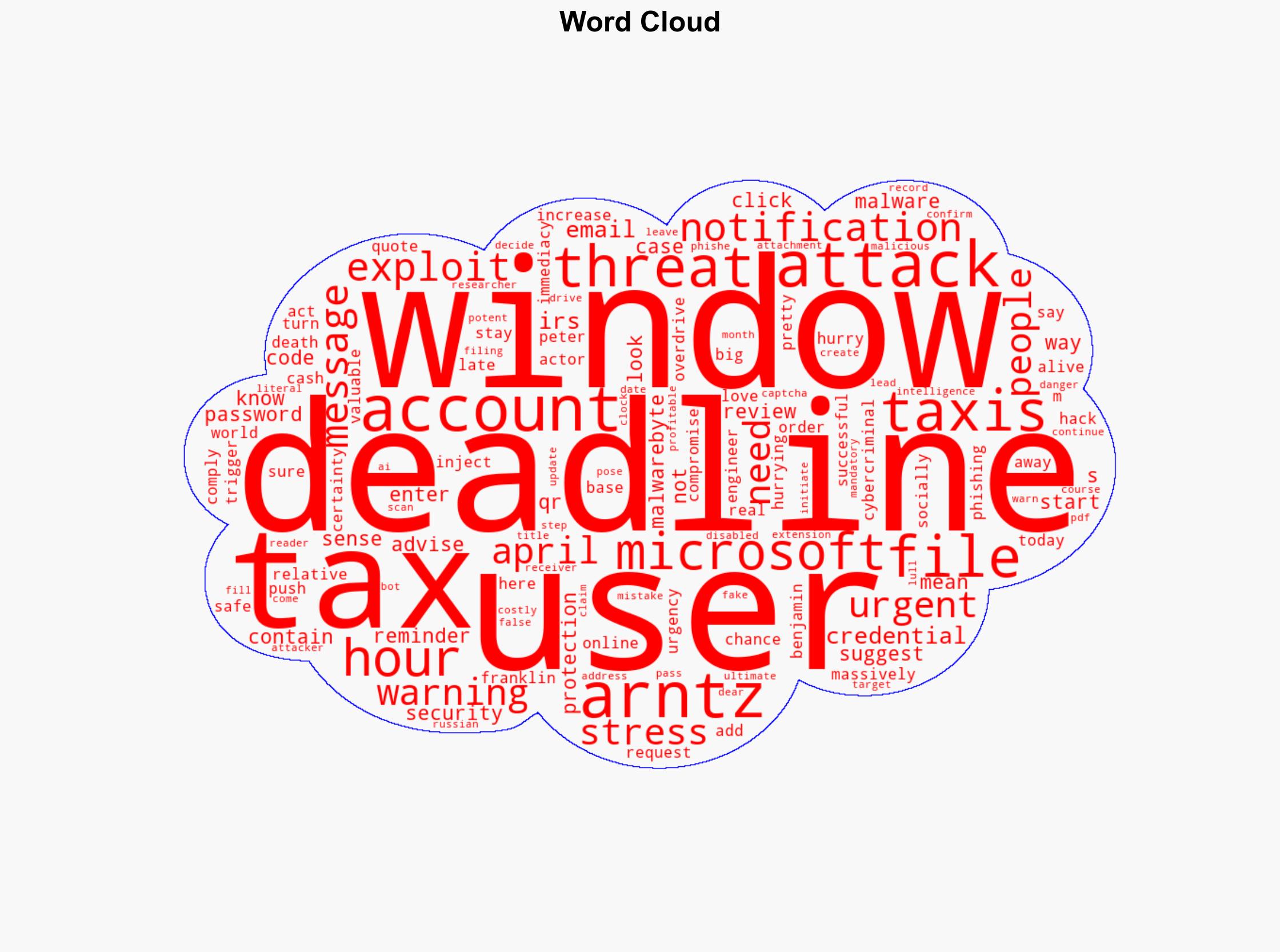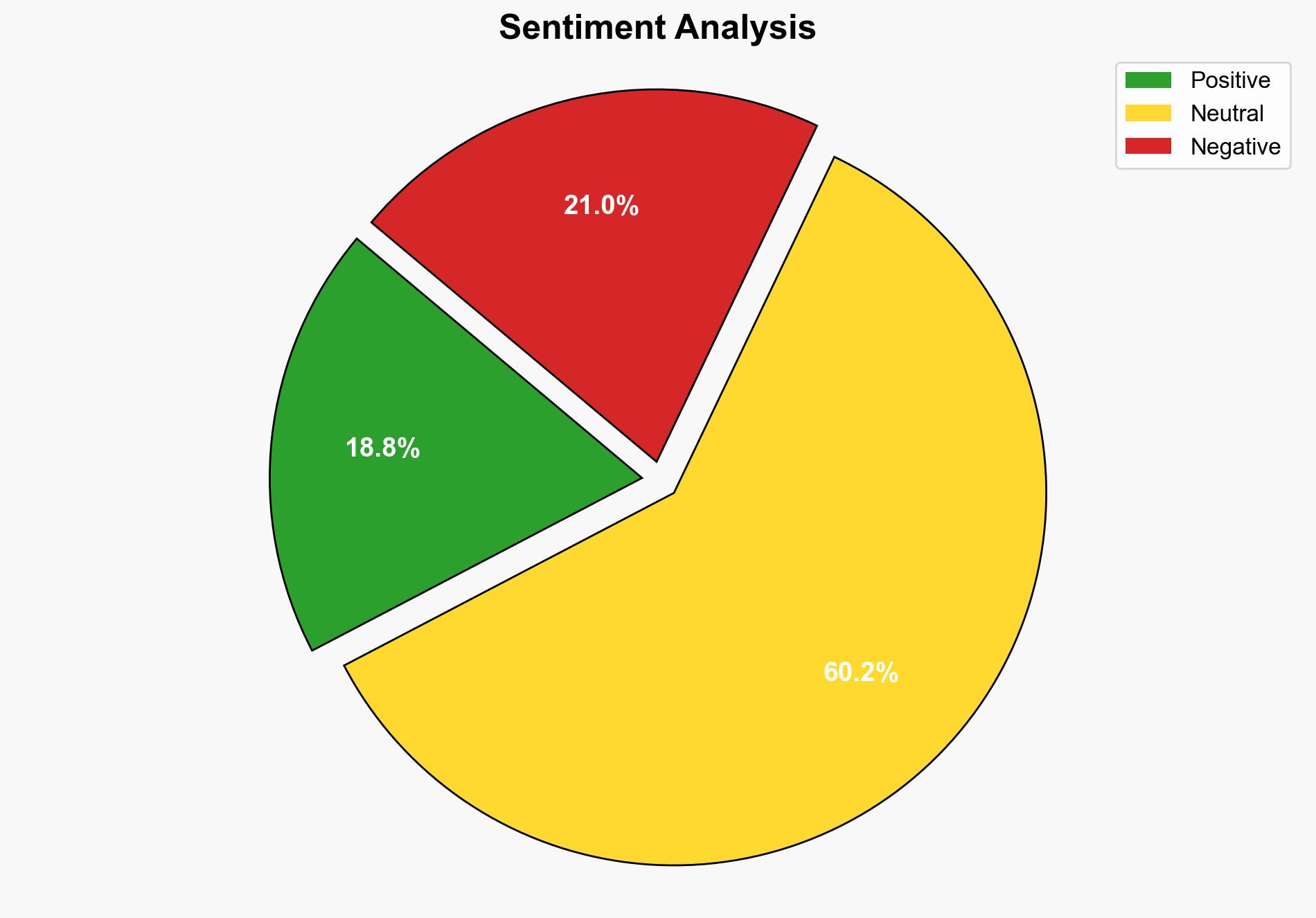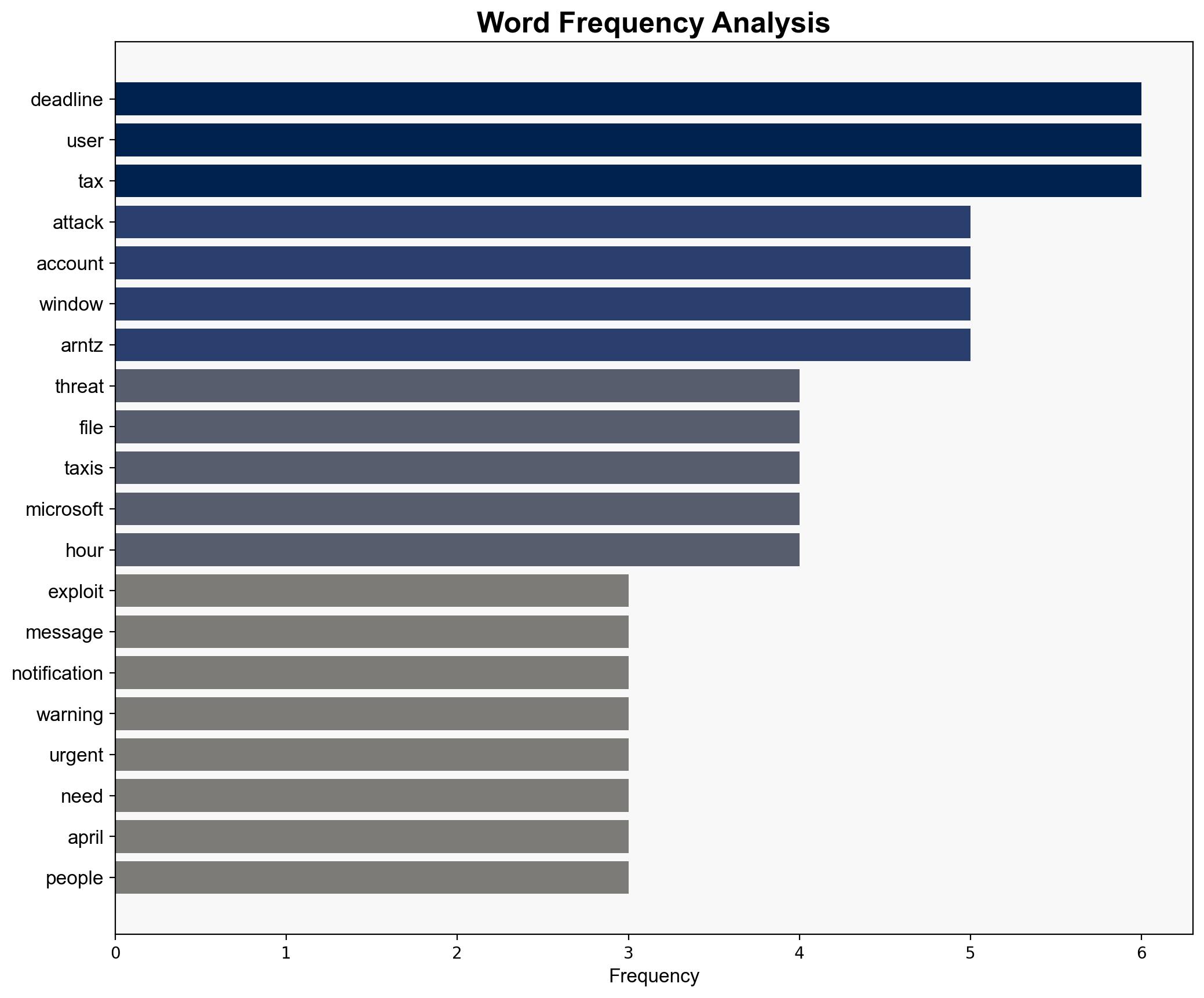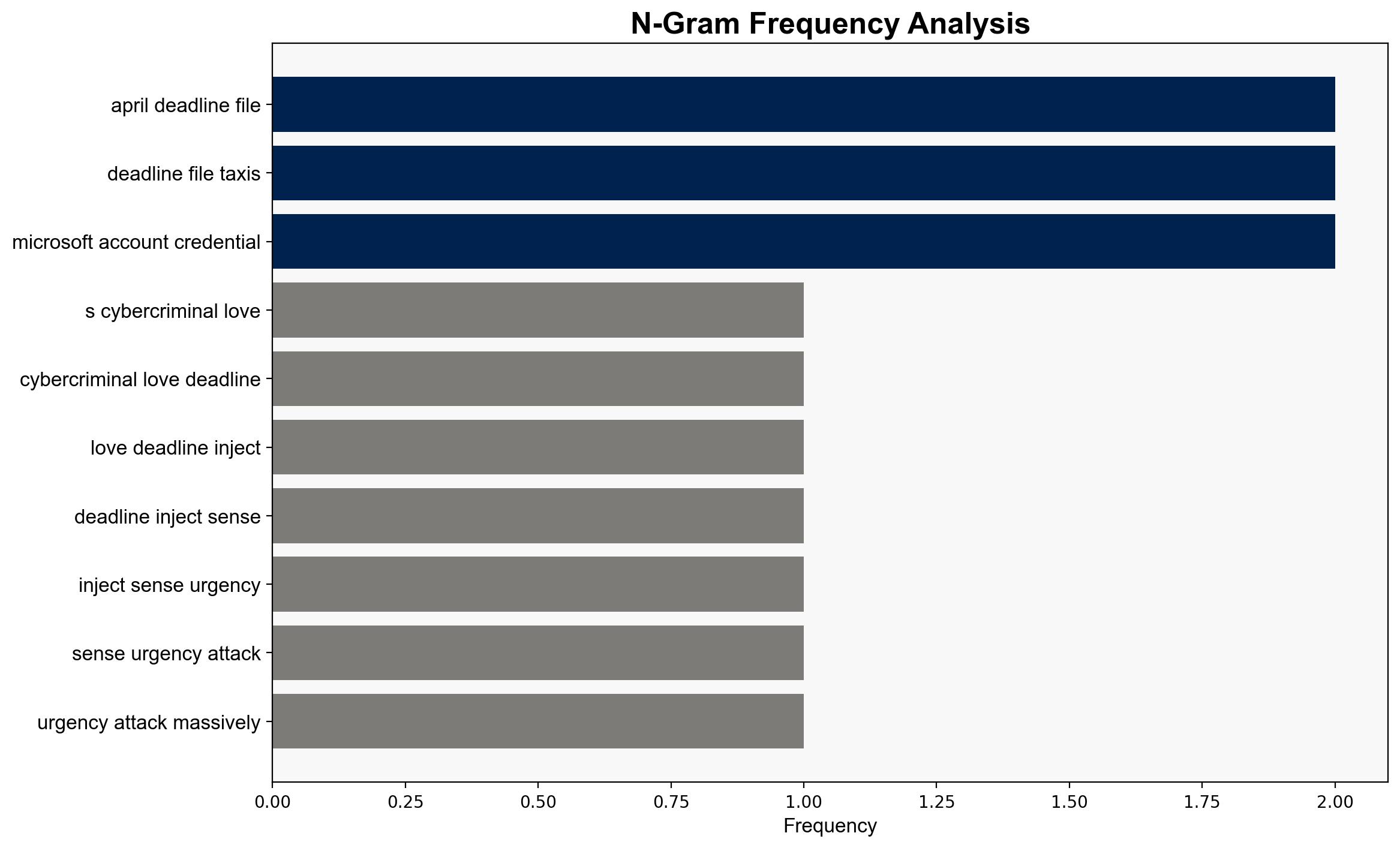Windows Users Given 24-Hour Warning As Attackers Strike – Forbes
Published on: 2025-04-14
Intelligence Report: Windows Users Given 24-Hour Warning As Attackers Strike – Forbes
1. BLUF (Bottom Line Up Front)
Cybercriminals are exploiting the urgency surrounding the April 15 U.S. tax filing deadline to launch phishing attacks targeting Windows users. These attacks aim to compromise Microsoft account credentials through malicious emails containing QR codes. Immediate action is required to mitigate the risk of credential theft, which could lead to unauthorized access and potential financial loss.
2. Detailed Analysis
The following structured analytic techniques have been applied for this analysis:
General Analysis
Cybercriminals are leveraging social engineering tactics by sending emails with a sense of urgency, disguised as tax-related notifications. The emails contain a PDF attachment with a QR code that, when scanned, leads users to a phishing site. The site prompts users to enter their Microsoft account credentials, which are then sent to a third-party actor. The exploitation of tax season stress increases the likelihood of successful attacks.
3. Implications and Strategic Risks
The primary risk is the unauthorized access to Microsoft accounts, which can lead to data breaches and financial theft. This attack vector poses a threat to individual users and organizations relying on Microsoft services. The sophistication of these phishing attempts, enhanced by AI, indicates a growing trend in cyber threats that could impact national security, economic stability, and public trust in digital communications.
4. Recommendations and Outlook
Recommendations:
- Implement multi-factor authentication for all Microsoft accounts to add an additional layer of security.
- Enhance user awareness programs focusing on identifying phishing attempts and safe email practices.
- Encourage the use of security software that can detect and block malicious attachments and links.
Outlook:
In the best-case scenario, increased awareness and security measures will reduce the success rate of these attacks. In the worst-case scenario, widespread credential theft could occur, leading to significant data breaches. The most likely outcome is a continued rise in sophisticated phishing attempts, necessitating ongoing vigilance and adaptation of security protocols.
5. Key Individuals and Entities
The report mentions Peter Arntz, who provided insights into the attack methodology. Additionally, a Russian receiver is identified as the recipient of stolen credentials, highlighting the international dimension of the threat.





